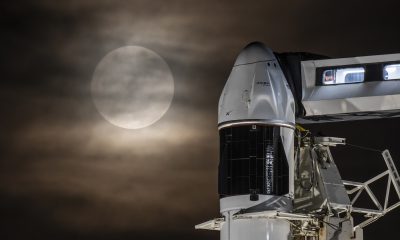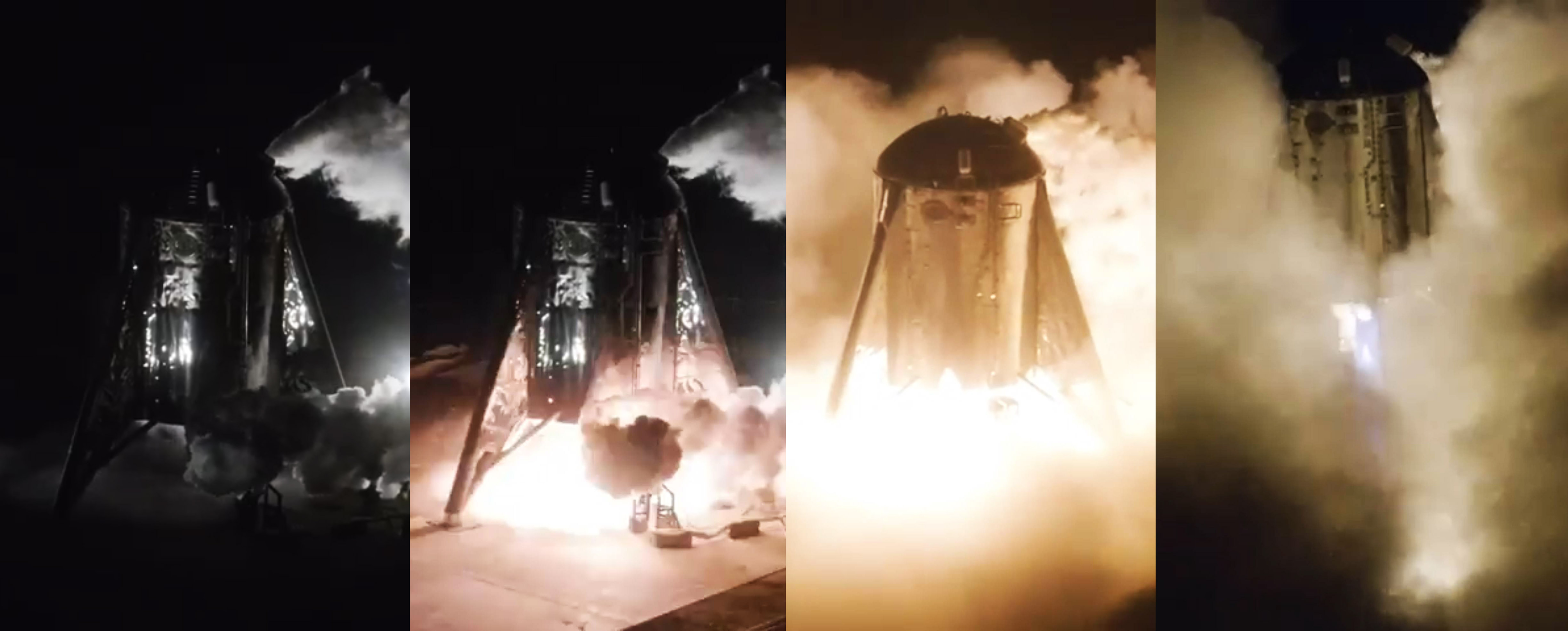

News
SpaceX’s Starhopper cleared by FAA for second and final flight test as locals urged to exit homes
After a full two weeks spent waiting for an FAA permit, SpaceX CEO Elon Musk and local South Texas authorities appear to be preparing Starhopper for a second major flight test as early as Monday, August 26th.
Assuming the FAA comes through with a permit, Starhopper is scheduled to lift off no earlier than 5pm EDT (21:00 UTC) on August 26th for a flight test expected to smash the low-fidelity Starship prototype’s previously altitude record of ~20m (65 ft). Confirming initial reports from NASASpaceflight.com, Musk also stated that Starhopper’s second flight will be its last, after which the steel rocket test-bed will be converted for stationary use at SpaceX’s South Texas facilities.
Prior to Musk tweeting that Starhopper may be nearing approval for its next flight, the SpaceX CEO revealed that delays were centered around the FAA’s apparent unwillingness to permit the vehicle’s next flight. Musk specifically stated that the FAA wanted more “hazard analysis”, meaning that the US aviation administration had concerns that Starhopper could pose a serious threat to local residents in a tiny housing development known as Boca Chica Village.
Technically speaking, Boca Chica Village is just 1.5 miles (2.4 km) away from SpaceX’s Starhopper launch facilities, where the vehicle is expected to reach a maximum altitude of no more than 200m (650 ft) as early as August 26th. FAA regulations tend to be prescriptive and extremely rigid, understandable given the breadth of US aviation-related activities the agency is tasked with regulating. However, a basic back-of-the-envelope analysis of Starhopper’s 200m hop suggests that the risk to local residents – even those as few as 1.5 miles away from the test – is minuscule.
Based on Starhopper’s inaugural flight, its lone Raptor engine – producing up to 200 tons (450,000 lbf) of thrust – is not exactly capable of rapidly moving the Starship prototype. For all accounts and purposes, Starhopper is a spectacularly heavy hunk of steel with the aerodynamics of a cylindrical brick – capable of flight solely through the brute-force application of a literal rocket engine. To make it even half of the distance from its launch site to the Village, Starhopper would have to remain in controlled flight while radically deviating from its planned trajectory, all while its flight termination system (FTS) – explosives meant to destroy the vehicle in a worst-case scenario – completely fails to activate.
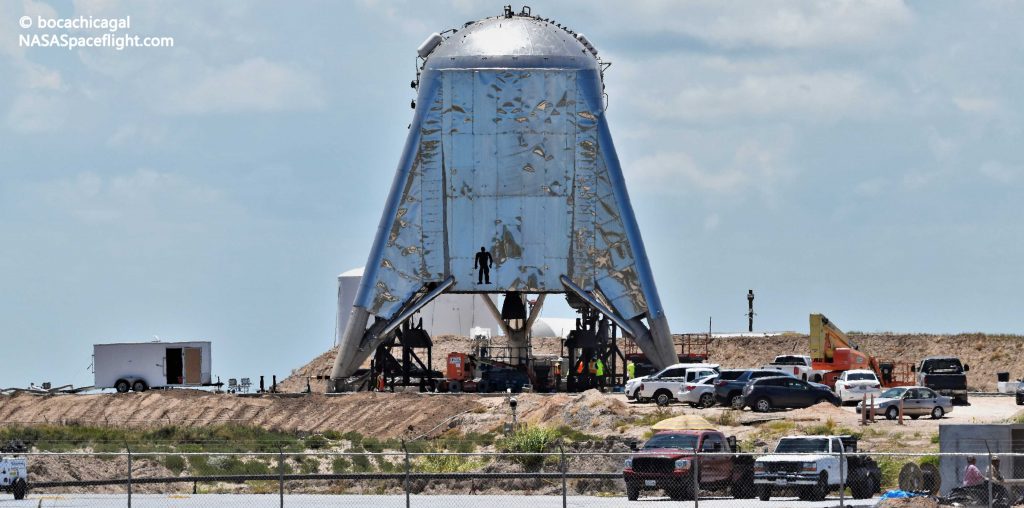
As evidence of the apparent lack of perceived risk to local residents, Cameron County, Texas officials distributed flyers to Village residents advising – but not requiring – those choosing to remain at their homes during the test to go outside during Starhopper’s next flight. This is recommended to avoid flying glass in the event that the vehicle explodes, potentially shattering windows with the shockwave that could result, but clearly demonstrates the fact that county officials believe there is a near-zero chance of Starhopper actually impacting anywhere near the houses.
Ultimately, Starhopper’s limited flight tests clearly pose little to no actual risk to residents, but this chapter does raise a far more significant question: what happens once Starship Mk1 is ready and the flight tests SpaceX is pursuing involve distances and heights on the order of several, tens, or hundreds of kilometers? For now, answers will have to wait til a later date.
A Hop and a skip into retirement
Aside from the delays and apparent lack of consensus on the safety of Starhopper’s minor hop tests, Musk confirmed that the prototype’s second test flight ever will likely be its last, providing some interesting insight into SpaceX’s next steps. Most notably, the fact that SpaceX is willing and ready to fully retire Starhopper after such a limited test series serves as a fairly confident statement that orbital-class Starship Mk1 (Texas) and Mk2 (Florida) prototypes are extremely close to flight-readiness.
Roughly a month ago, Musk tweeted that those Starship prototypes could be ready for their first flights as early as mid-September to mid-October, “2 to 3 months” from mid-July. In additional comments made on August 20th, Musk stated that his planned Starship presentation would be delayed in light of Starhopper’s own delays, and is now instead expected to occur around a major Starship Mk1 integration milestone in “mid September”.
As previously discussed on Teslarati, Starhopper’s brief service life is entirely unsurprising, delayed by issues with Raptor engines to the point that SpaceX’s far more valuable Starship prototypes – having made relentless progress – are already nearing completion. Once those Starships are ready for almost any kind of integrated testing, Starhopper will be made entirely and immediately redundant.
“According to Musk, either or both of those orbital-class prototypes could be ready for their inaugural flight tests as early as mid-September, perhaps just 1-2 months from now. Given that Starships Mk1 and Mk2 are significantly higher fidelity than Starhopper, the ungainly testbed will likely become redundant the moment that its successors are ready for flight. In other words, Starhopper is fast approaching the end of its useful life, and SpaceX’s fight for a 200m hop-test permit could ultimately be a waste of time, effort, and money if said permit doesn’t also cover Starship Mk1.”
Teslarati.com, August 20th, 2019
On another positive note, CEO Elon Musk says that Starhopper won’t be ‘retired’ to the scrapyard and will instead be lightly modified to serve as an in-situ test stand for Raptor engines, a useful addition once SpaceX South Texas moves on to multi-engine Starship and Super Heavy testing.
With any luck, SpaceX will attempt to livestream Starhopper’s second attempted flight. Stay tuned for updates on the 5pm EDT, August 26th test.
Check out Teslarati’s Marketplace! We offer Tesla accessories, including for the Tesla Cybertruck and Tesla Model 3.
Elon Musk
Tesla investors will be shocked by Jim Cramer’s latest assessment
Jim Cramer is now speaking positively about Tesla, especially in terms of its Robotaxi performance and its perception as a company.
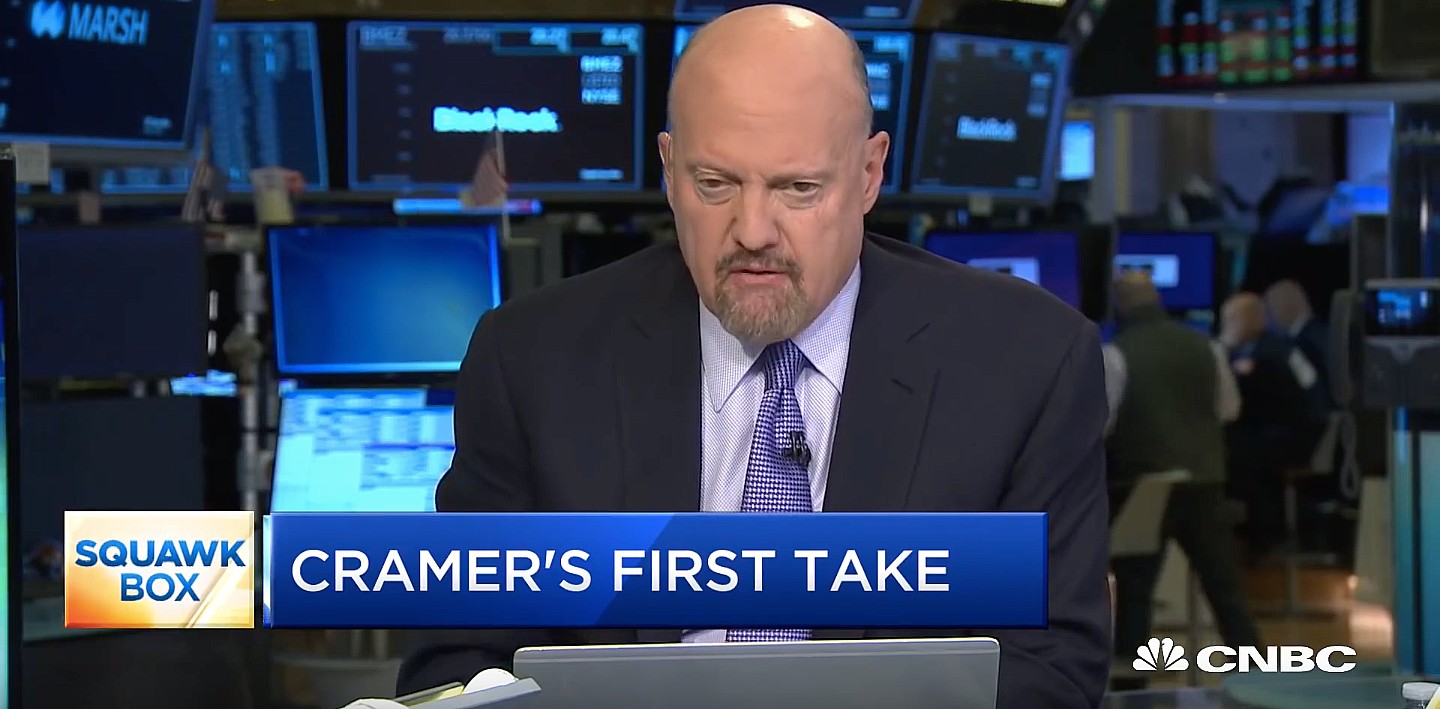
Tesla investors will be shocked by analyst Jim Cramer’s latest assessment of the company.
When it comes to Tesla analysts, many of them are consistent. The bulls usually stay the bulls, and the bears usually stay the bears. The notable analysts on each side are Dan Ives and Adam Jonas for the bulls, and Gordon Johnson for the bears.
Jim Cramer is one analyst who does not necessarily fit this mold. Cramer, who hosts CNBC’s Mad Money, has switched his opinion on Tesla stock (NASDAQ: TSLA) many times.
He has been bullish, like he was when he said the stock was a “sleeping giant” two years ago, and he has been bearish, like he was when he said there was “nothing magnificent” about the company just a few months ago.
Now, he is back to being a bull.
Cramer’s comments were related to two key points: how NVIDIA CEO Jensen Huang describes Tesla after working closely with the Company through their transactions, and how it is not a car company, as well as the recent launch of the Robotaxi fleet.
Jensen Huang’s Tesla Narrative
Cramer says that the narrative on quarterly and annual deliveries is overblown, and those who continue to worry about Tesla’s performance on that metric are misled.
“It’s not a car company,” he said.
He went on to say that people like Huang speak highly of Tesla, and that should be enough to deter any true skepticism:
“I believe what Musk says cause Musk is working with Jensen and Jensen’s telling me what’s happening on the other side is pretty amazing.”
Tesla self-driving development gets huge compliment from NVIDIA CEO
Robotaxi Launch
Many media outlets are being extremely negative regarding the early rollout of Tesla’s Robotaxi platform in Austin, Texas.
There have been a handful of small issues, but nothing significant. Cramer says that humans make mistakes in vehicles too, yet, when Tesla’s test phase of the Robotaxi does it, it’s front page news and needs to be magnified.
He said:
“Look, I mean, drivers make mistakes all the time. Why should we hold Tesla to a standard where there can be no mistakes?”
It’s refreshing to hear Cramer speak logically about the Robotaxi fleet, as Tesla has taken every measure to ensure there are no mishaps. There are safety monitors in the passenger seat, and the area of travel is limited, confined to a small number of people.
Tesla is still improving and hopes to remove teleoperators and safety monitors slowly, as CEO Elon Musk said more freedom could be granted within one or two months.
News
Tesla launches ultra-fast V4 Superchargers in China for the first time
Tesla has V4 Superchargers rolling out in China for the first time.
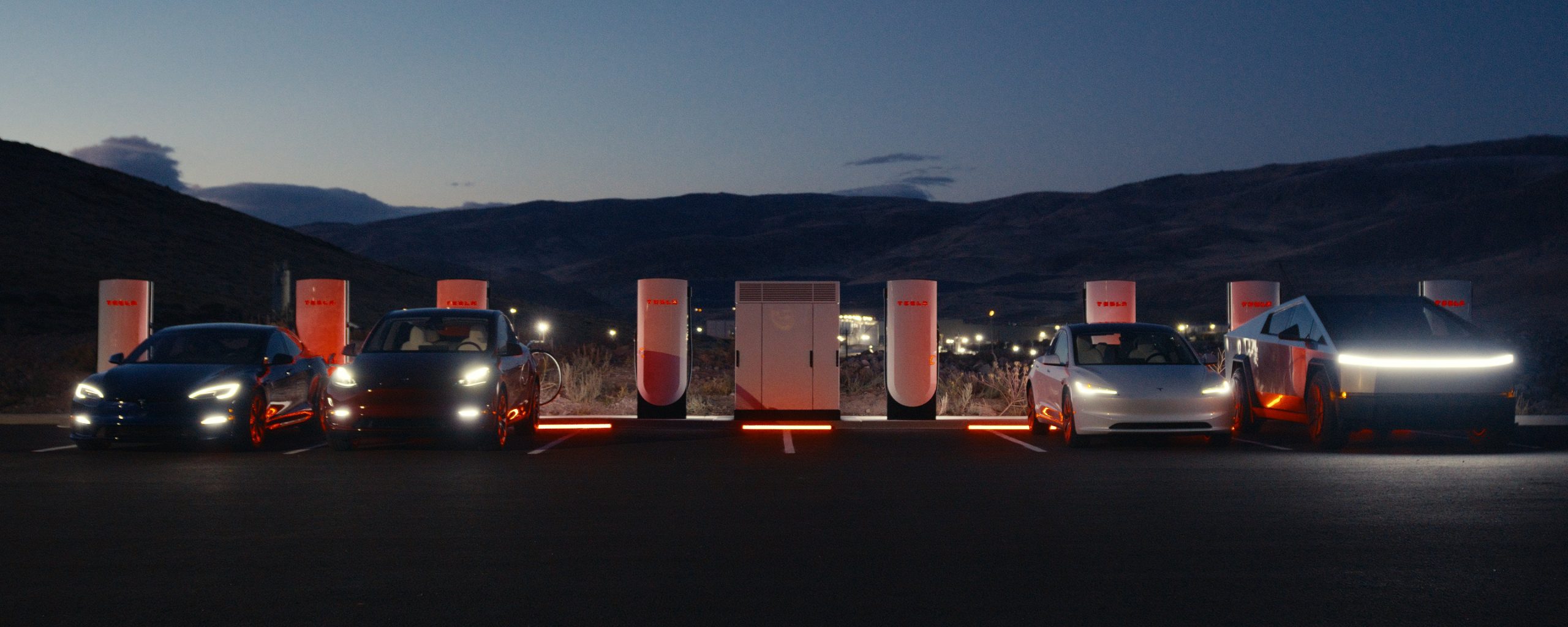
Tesla already has nearly 12,000 Supercharger piles across mainland China. However, the company just initiated the rollout of the ultra-fast V4 Superchargers in China for the first time, bringing its quick-charging piles to the country for the first time since their launch last year.
The first batch of V4 Superchargers is now officially up and running in China, the company announced in a post on Chinese social media outlet Weibo today.
The company said in the post:
“The first batch of Tesla V4 Superchargers are online. Covering more service areas, high-speed charging is more convenient, and six-layer powerful protection such as rain and waterproof makes charging very safe. Simultaneously open to non-Tesla vehicles, and other brands of vehicles can also be charged. There are more than 70,000 Tesla Superchargers worldwide. The charging network layout covers 100% of the provincial capitals and municipalities in mainland China. More V4 Superchargers will be put into use across the country. Optimize the charging experience and improve energy replenishment efficiency. Tesla will accompany you to the mountains, rivers, lakes, and seas with pure electricity!”
The first V4 Superchargers Tesla installed in China are available in four cities across the country: Shanghai, Zhejiang, Gansu, and Chongqing.

Credit: Tesla China
Tesla has over 70,000 Superchargers worldwide. It is the most expansive and robust EV charging network in the world. It’s the main reason why so many companies have chosen to adopt Tesla’s charging connector in North America and Europe.
In China, some EVs can use Tesla Superchargers as well.
The V4 Supercharger is capable of charging vehicles at speeds of up to 325kW for vehicles in North America. This equates to over 1,000 miles per hour of charging.
Elon Musk
Elon Musk hints at when Tesla could reduce Safety Monitors from Robotaxi
Tesla could be reducing Safety Monitors from Robotaxi within ‘a month or two,’ CEO Elon Musk says.
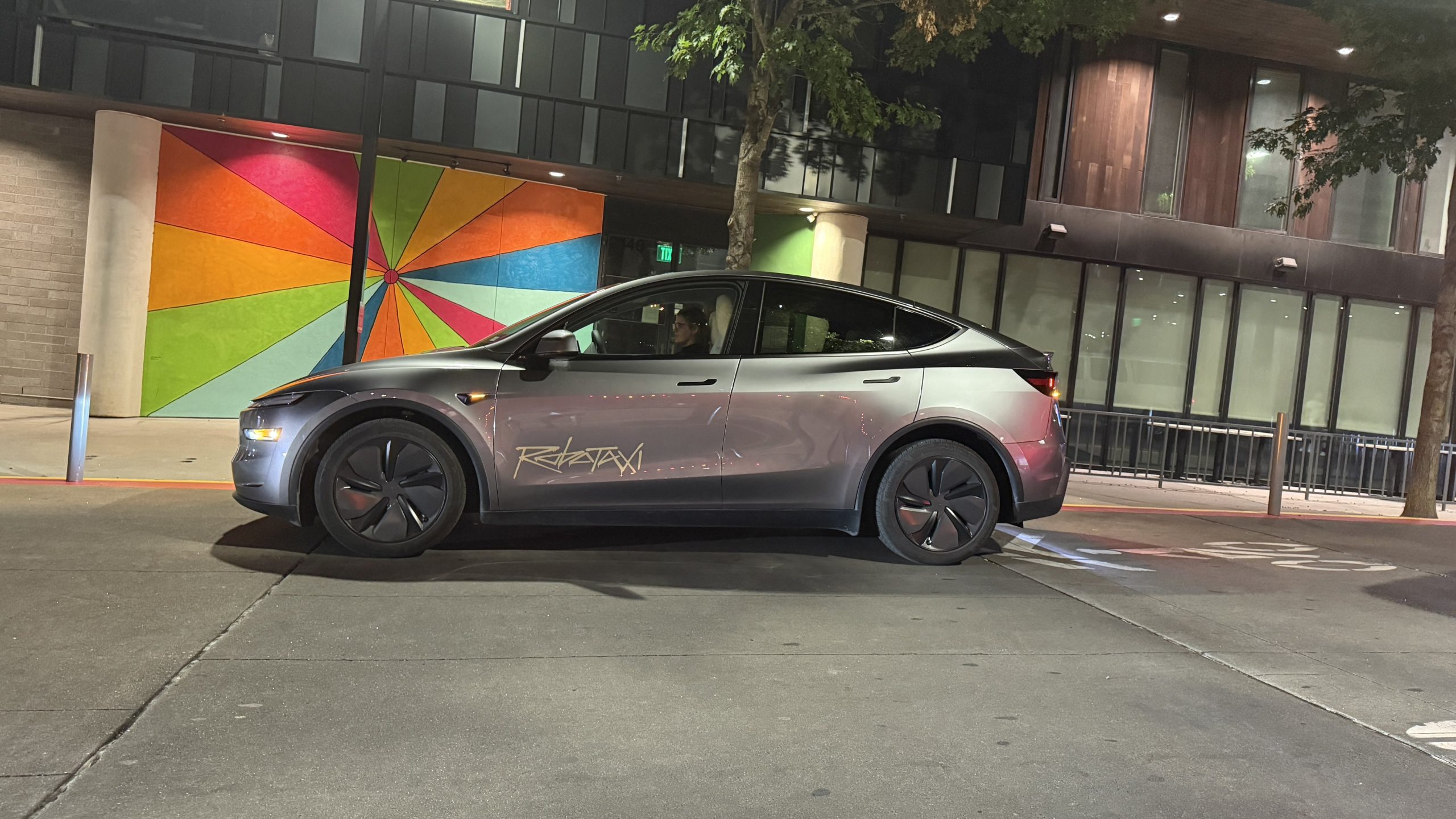
Elon Musk hinted at when Tesla could begin reducing Safety Monitors from its Robotaxis. Safety Monitors are Tesla employees who sit in the front passenger seat during the driverless rides, and are there to ensure safety for occupants during the earliest rides.
Tesla launched its Robotaxi fleet in Austin last Sunday, and after eight days, videos and reviews from those who have ridden in the driverless vehicles have shown that the suite is safe, accurate, and well coordinated. However, there have been a few hiccups, but nothing that has put anyone’s safety in danger.
A vast majority — close to all of the rides — at least according to those who have ridden in the Robotaxi, have been performed without any real need for human intervention. We reported on what was the first intervention last week, as a Safety Monitor had to step in and stop the vehicle in a strange interaction with a UPS truck.
Watch the first true Tesla Robotaxi intervention by safety monitor
The Tesla and UPS delivery truck were going for the same street parking space, and the Tesla began to turn into it. The UPS driver parallel parked into the spot, which was much smaller than his truck. It seemed to be more of an instance of human error instead of the Robotaxi making the wrong move. This is something that the driverless cars will have to deal with because humans are aggressive and sometimes make moves they should not.
The Safety Monitors have not been too active in the vehicles. After all, we’ve only seen that single instance of an intervention. There was also an issue with the sun, when the Tesla braked abnormally due to the glare, but this was an instance where the car handled the scenario and proceeded normally.
With the Robotaxi fleet operating impressively, some are wondering when Tesla will begin scaling back both the Safety Monitors and Teleoperators that it is using to ensure safety with these early rides.
CEO Elon Musk answered the inquiry by stating, “As soon as we feel it is safe to do so. Probably within a month or two.”
As soon as we feel it is safe to do so.
Probably within a month or two. We continue to improve the Tesla AI with each mile driven.
— Elon Musk (@elonmusk) June 30, 2025
Musk’s response seems to confirm that there will be fewer Teleoperators and Safety Monitors in the coming months, but there will still be some within the fleet to ensure safety. Eventually, that number will get to zero.
Reaching a point where Tesla’s Robotaxi is driverless will be another significant milestone for the company and its path to fully autonomous ride-sharing.
Eventually, Tesla will roll out these capabilities to consumer-owned vehicles, offering them a path to generate revenue as their car operates autonomously and completes rides.
For now, Tesla is focusing on perfecting the area of Austin where it is currently offering driverless rides for just $4.20 to a small group of people.
-

 News5 days ago
News5 days agoTesla Robotaxi’s biggest challenge seems to be this one thing
-

 News2 weeks ago
News2 weeks agoTesla confirms massive hardware change for autonomy improvement
-

 Elon Musk2 weeks ago
Elon Musk2 weeks agoElon Musk slams Bloomberg’s shocking xAI cash burn claims
-

 News2 weeks ago
News2 weeks agoTesla features used to flunk 16-year-old’s driver license test
-

 News2 weeks ago
News2 weeks agoTesla China roars back with highest vehicle registrations this Q2 so far
-

 News2 weeks ago
News2 weeks agoTexas lawmakers urge Tesla to delay Austin robotaxi launch to September
-

 News2 weeks ago
News2 weeks agoTesla dominates Cars.com’s Made in America Index with clean sweep
-

 News2 weeks ago
News2 weeks agoTesla’s Grok integration will be more realistic with this cool feature












